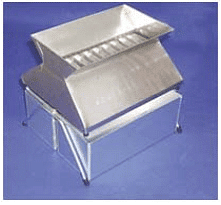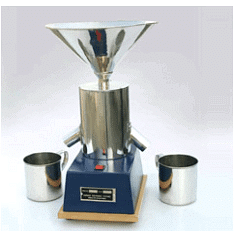Seed Testing and it's Role | Agriculture Optional for UPSC PDF Download
Introduction
Seed testing involves assessing the characteristics of a seed lot, including its physical purity, moisture content, germination rate, and other quality attributes. This process serves to provide the agricultural community with high-quality seeds.
The Seed Testing Laboratory plays a central role in ensuring seed quality control. Seed testing services are essential for obtaining information about the planting potential of seed lots, and these services are accessible to all individuals involved in seed production, sales, and utilization.
Objective & Importance of Seed Testing
Objective
Seed testing serves various objectives aimed at reducing the risks associated with planting low-quality seeds:
- To identify quality issues and their likely causes.
- To assess the suitability of seeds for planting.
- To determine the necessity for drying and processing and specify the appropriate procedures.
- To verify if seeds meet established quality standards and labeling specifications.
- To establish quality levels and provide a basis for setting prices and enabling consumers to differentiate among different seed lots in the market. The primary goal of seed testing is to yield precise and reproducible results regarding the quality status of the seed samples analyzed in Seed Testing Laboratories.
Importance
- The significance of seed testing was recognized over a century ago to ensure the reliability of seeds for planting. This recognition was prompted by instances of adulteration of vegetable seeds with substances like stone dust, notably in parts of Europe.
- Seed testing has evolved as a tool to assist agriculture in mitigating certain risks associated with crop production by providing essential information about various quality attributes, including purity, moisture content, germination rate, vigor, and overall seed health.
- Ensuring the quality of seeds relies on various seed testing protocols that establish the authenticity of the cultivar.
- The primary objective of seed testing is to assess the suitability for planting and the genuineness of certified seed lots.
- Seed testing is necessary to evaluate the quality attributes of seed lots intended for sale, including seed moisture content, germination, vigor, physical and genetic purity, and freedom from seed-borne diseases and insect infestations. In India, the focus of seed testing primarily revolves around moisture, germination, and physical purity.
- International Seed Testing Association (ISTA) has developed standard procedures for evaluating seeds, and adherence to ISTA rules is mandatory when seeds are destined for international trade.
- The seed testing procedures described below are primarily based on international guidelines, as many of our own regulations (e.g., Chalam et al., 1967) are derived from ISTA, 1996. The quality of seeds, which can be assessed through seed testing, significantly impacts the economic yield of crops.
- Seed quality assessment involves analyzing seed samples obtained from seed lots designated for cultivation. The quantity of the seed sample tested in the laboratory is significantly smaller in comparison to the seed lot it represents.
Role of Seed Testing Laboratories
Seed testing laboratories play a crucial role in both seed certification and seed quality control initiatives. Their primary aim is to provide information about seed quality, serving the interests of producers, consumers, and the seed industry. The test results obtained in these laboratories can lead to the rejection of poorly produced or low-quality seeds, which may have legal implications.
Laboratory Seed Analysis: Seed testing is accessible to all those involved in the production, sale, and use of seeds. This is a highly specialized and technical endeavor. To maintain consistency in quality control, seed analysis laboratories are typically organized into four distinct sections:
- Purity Testing Section:
- This section assesses the purity of a seed lot by examining two key aspects:
a) Evaluating the cleanliness of the seed lot, and
b) Confirming the authenticity of the cultivar.
- This section assesses the purity of a seed lot by examining two key aspects:
- Moisture Testing Section.
- Viability, Germination, and Vigor Testing Section.
Sampling in Seed Testing Laboratory
When seed samples arrive at the laboratory, they need to be reduced to create working samples for conducting various tests.
Several methods are available for obtaining these working samples.
- Seed Sampling: This involves obtaining model seed samples provided by the producer.
- Mixing and Division of Seeds: The primary goal of mixing and dividing seeds is to produce a representative and uniform seed sample for analysis by reducing the submitted sample to the desired working sample size.
Methods of Mixing and Dividing
- Mechanical Dividing: This method employs mechanical dividers suitable for all seeds except those with chaffy or fuzzy characteristics.
Objectives of Mechanical Dividing
- To thoroughly mix the seed sample to make it as homogeneous as possible.
- To reduce the seed sample to the required size without any bias.
- The submitted sample can be effectively mixed and blended by passing it through the divider multiple times until the seeds are uniformly mixed and divided into approximately equal parts.
Types of Mechanical Dividers
- Boerner Divider: This device consists of a hopper, a cone, and a series of baffles directing seeds into two spouts. Baffles are evenly spaced, and every other one leads to one spout. A valve at the hopper's base retains the seeds. When the valve is opened, the seeds fall over the cone, where they are evenly distributed, and approximately equal quantities of seeds are collected in each spout. However, it can be challenging to assess cleanliness with this divider.

- Soil Divider: Built on the same principles as the Boerner divider, this divider features channels arranged in a straight row. It consists of a hopper with attached channels, a framework to hold the hopper, two receiving pans, and a pouring pan. It is suitable for large seeds and those with chaff.

- Gamet Divider (Centrifugal): This method utilizes centrifugal force for mixing and dividing seeds. Seeds fall onto a shallow rubber spinner, which, when rotated by an electric motor, ejects the seeds through centrifugal force. A stationary baffle divides the area where the seeds fall into two parts, ensuring that approximately equal quantities of seeds are collected in each spout.

- Random Cup Method: This approach is suitable for seeds requiring a working sample of up to 10 grams, provided they are not extremely chaffy or prone to bouncing or rolling. Six to eight small cups are randomly placed on a tray. After preliminary mixing, the seed is uniformly spread across the tray, and the seeds that fall into the cups are taken as the working sample.
- Modified Halving Method: This method involves a tray fitted with a grid of equal-sized cubical cups, with every alternate cup having no bottom. After preliminary mixing, the seed is evenly poured over the grid. When the grid is lifted, approximately half the sample remains on the tray. This halving process is repeated successively until the working sample size is achieved.
- Spoon Method: Suitable for small-seeded species, this method requires a tray, spatula, and a spoon with a straight edge. After preliminary mixing, the seed is evenly poured over the tray without shaking it. Small portions of seed from at least five random places on the tray are then taken with the spoon and spatula. Sufficient portions are collected to estimate a working sample of the required size.
- Hand Halving Method: This method is limited to chaffy seeds. The seed is evenly poured onto a clean, smooth surface and thoroughly mixed into a mound. The mound is then divided into halves, and each half is mounded again and halved into four portions. This process is repeated until the required weight of the sample is obtained.
|
52 videos|224 docs
|
















